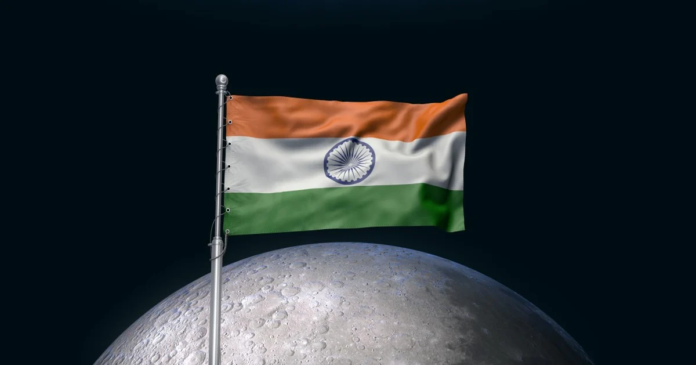Days after a Russian probe crashed in the same area, India was preparing to become the first country to land a spacecraft on the Moon’s south pole.
India’s Moon mission set for touchdown: The most recent attempt at a Moon landing marks a historic turning point for the world’s most populous country as it inches closer to space power goals.
Chandrayaan-3, which translates as “Mooncraft” in Sanskrit, is planned to land close to the little-known lunar south pole shortly after 6:00 pm India time (1230 GMT).
The Times of India’s front page headline on Wednesday, with the anticipated lunar landing dominating local headlines, read, “India reaches for the Moon.” It’s “D-Day for the Moon Mission,” according to The Hindustan Times.
The new attempt by India comes only days after Russia’s first Moon mission in almost 50 years, which was headed for the same region, crashed on the lunar surface. An earlier Indian attempt in 2019 was unsuccessful.
The most recent photographs the lander sent home, according to former Indian space chief K. Sivan, however, offered every indication the mission’s final leg would be successful.
It is encouraging that we will be able to complete the landing operation without any issues, he said on Monday, according to AFP.
Confidence
Sivan continued by saying that changes had been made by the Indian Space Research Organisation (ISRO) following a disaster four years prior in which scientists lost communication with the previous lunar module just before it was scheduled to land.
“Chandrayaan-3 is going to go with more ruggedness,” he declared. “We’re confident that everything will go as planned, and we expect it to.”
The Apollo missions of the 1960s and 1970s, which successfully reached the Moon within days, demonstrated a much faster pace compared to the mission launched approximately six weeks ago, witnessed by thousands of enthusiastic spectators.
The probe must orbit the Earth multiple times to pick up speed before launching on its month-long lunar course since India is utilising rockets that are significantly less powerful than those the United States utilised at the time.
Sanskrit for “valour,” the spacecraft’s lander Vikram separated from its propulsion module last week and has been sending back pictures of the moon’s surface ever since it entered lunar orbit on August 5.
ISRO’s Low-Budget Achievements and Future Endeavors in Space Exploration
A day before the landing, the ISRO posted on social media that everything was going according to plan and remarked on how “buzzed with energy and excitement” its mission control complex was.
On X, formerly known as Twitter, the agency wrote, “Smooth sailing is continuing.
India has a very low-budget aerospace project, although it has expanded significantly in size and velocity since it launched its first probe into lunar orbit in 2008.
The cost of the most recent mission is $74.6 million, which is far less than that of missions from other nations and evidence of India’s thrifty space engineering.
According to experts, India can keep prices down by utilising and adapting current space technology, as well as by employing a large number of highly competent engineers who make a small fraction of what their foreign colleagues do.
India became the first Asian country to launch a satellite into Mars orbit in 2014, and by next year, it plans to launch a three-day manned trip into Earth’s orbit.
“Extremely important,”
The exploration of the largely uncharted lunar south pole by India will add “very, very important” knowledge to the scientific community, according to Sivan, the former head of ISRO.
Prior to now, only China, the United States, and Russia had successfully completed a controlled landing on the moon’s surface.
Russia’s first lunar probe launch in over 50 years took place earlier in August.
If successful, it would have been the first mission of any country to perform a controlled landing at the lunar south pole, beating Chandrayaan-3 by a few days.
But on Saturday, when the Luna-25 probe was getting ready to descend, it experienced an unknown problem and crashed-landed.
Punitive sanctions stemming from the onset of the Ukraine conflict have affected Russia’s space industry, along with the challenges of corruption, limited innovation, and partnerships.

